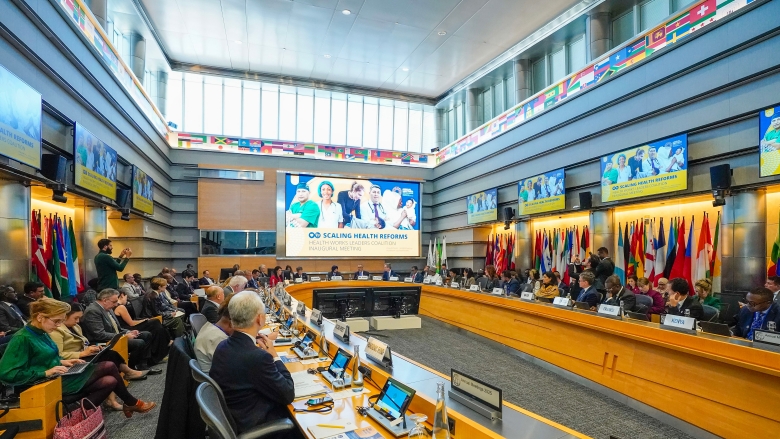Our Approach
Through strategic investments—such as redesigning primary care, scaling national health insurance programs, expanding the manufacture of critical health supplies, supporting regulatory reform for more private sector engagement, and training healthcare workers—the World Bank Group is enabling countries to unlock economic potential.
Achieving the World Bank Group's goal of reaching 1.5 billion people with quality and affordable health services will require smarter resource use, bold thinking, and strong partnerships. But working together, we will get there.
Our strategy is focused on three core elements:
Health for All Ages
- Expanding the package of services to include coverage throughout a person’s lifetime, from maternal and child health and nutrition services to non-communicable diseases and long-term care for the elderly.
Reaching the Hardest to Reach
- Bringing care to everyone through community health workers, home-based services, telehealth, and utilizing schools and pharmacies as service delivery points.
Reducing Financial Barriers
- Subsidizing care and expanding national health coverage plans, so families can choose health without sacrificing food.
Successfully achieving these elements requires transforming health systems. With strong primary health care at its core, it also means focusing on workforce training, resilient infrastructure, insurance expansion, supply chain modernization, and supportive regulatory frameworks to enable more private sector investments.
IFC, the Bank’s private sector arm, is accelerating private capital mobilization in developing countries to strengthen the local production of critical health supplies, such as vaccines and medical devices, and to support the manufacture and distribution of pharmaceuticals.
IFC also supports governments to establish public-private partnerships that help the public health sector leverage private sector capabilities for service delivery. This can complement and expand capacity to help countries move closer to their public health goals.
Scaling Collaboration for Impact
To achieve this, all actors—governments, businesses, civil society, and philanthropies—must act together. The World Bank Group is working with a coalition of global health leaders to accelerate reforms, knowledge sharing, and financing ahead of the 2025 Universal Health Coverage Forum.
The Health System Transformation & Resilience Fund (HSTRF) is the World Bank’s primary Trust Fund vehicle for achieving the goal and supporting countries to provide quality, affordable health services for 1.5 billion people by 2030. By pooling contributions from donors and consolidating external financing, the HSTRF reduces duplication and aligns investments with developing countries’ national plans so ministries can focus on delivering care.
By uniting efforts around the 1.5 billion target, we can create healthier populations, stronger economies, and a more equitable future for all.





